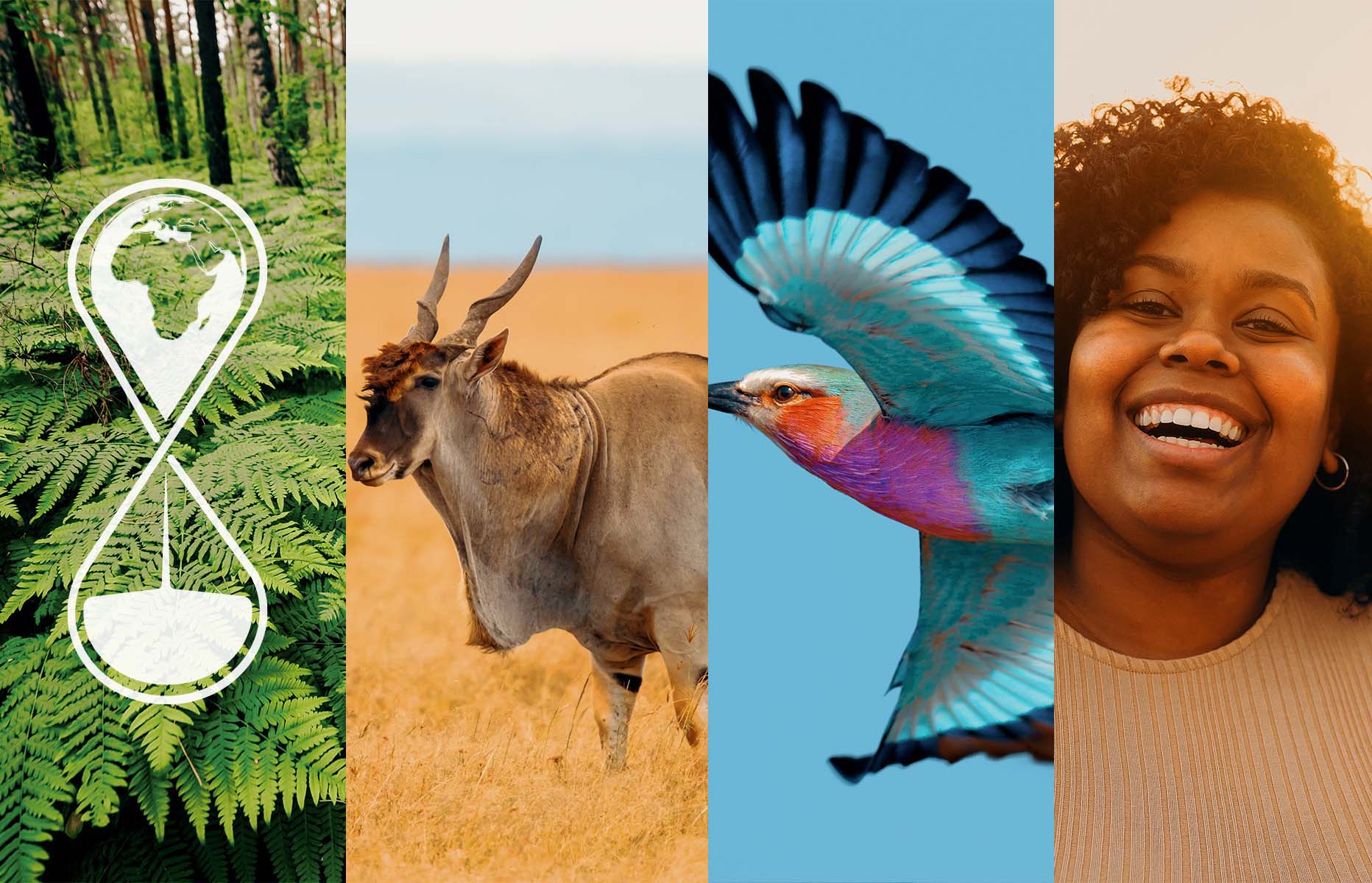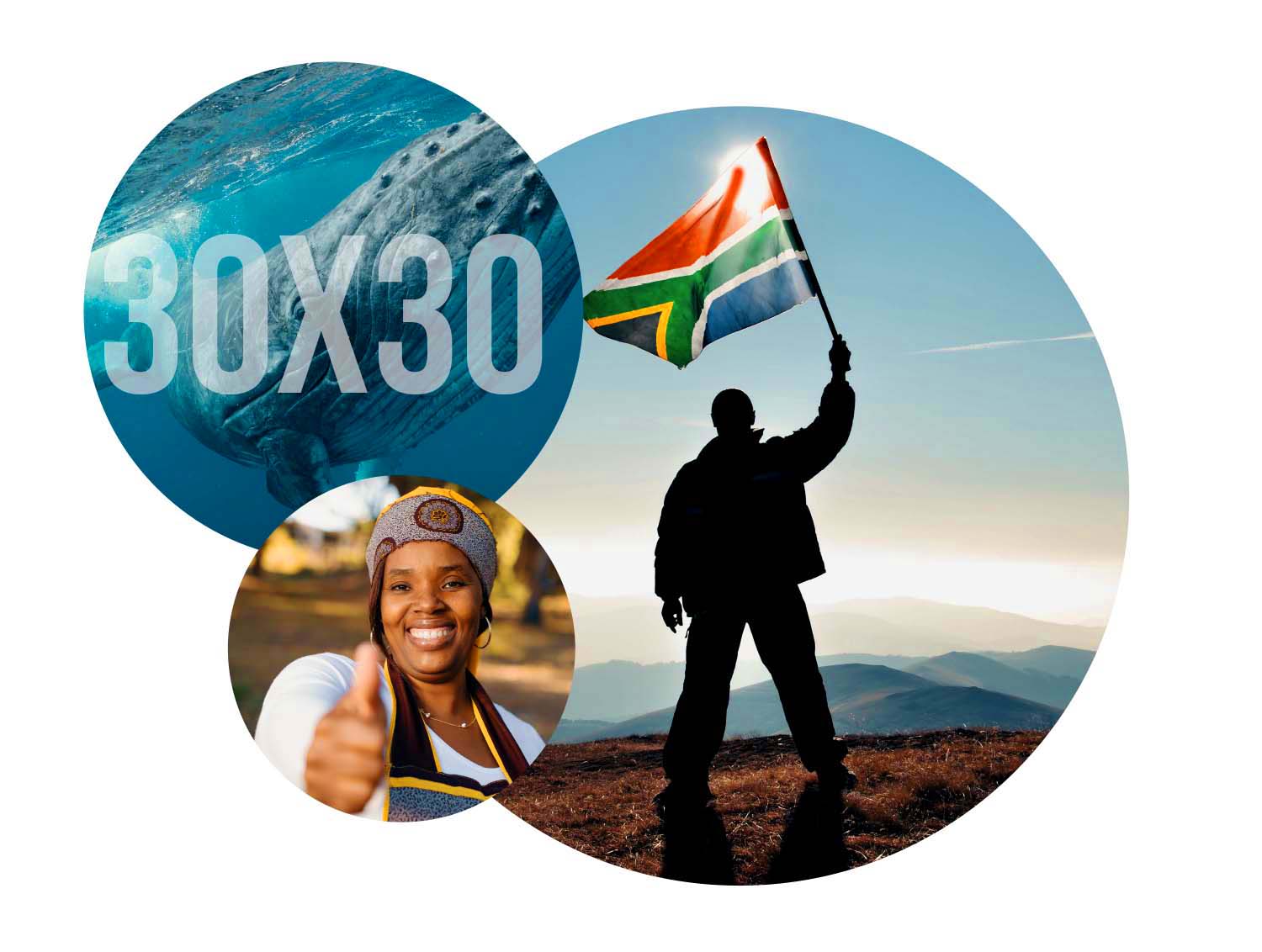30×30 is our last chance
The twin crises of climate change and biodiversity loss caused by human activity are eroding our natural planet at a rate faster than it can be replaced:
Since the 1970s we have lost 60% of the world’s terrestrial wildlife and 90% of the oceans big fish, with a predicted 1 million more plant and animal species facing extinction within the next decade. In Africa by 2100, 50% of Africa’s bird and mammal species could disappear.
Humans rely on a diverse and functioning natural ecosystem to sustain their life on earth, without it, human life as we know it will end.
Protected areas are nature-based solutions for mitigating climate change and sequestering carbon.
Biodiversity loss has been identified as one of the main threats to the global economy, impacting on South Africa’s economic growth and development.
Science says that protection of at least 30% of land and sea globally is the absolute minimum to halt biodiversity loss. It is the foundation for a surviving and thriving future for our planet
We do not have time to deliberate. There are only eight years left before 2030. It is not an either-or situation. We need to act swiftly and decisively to protect more at the same time as improving the quality of protected and conserved areas and focusing on sustainable and biodiversity focused land-use planning for Protected Areas and OECMs (Other effective area-based conservation measures).

Only through a global effort to increase area-based targets, especially in areas most important for biodiversity, can 30×30 be achieved.
30×30 is explicitly a global target meaning that each nation, including South Africa, is able to determine, based on the best science, how much and where protection should be placed.
There is no shortage of land or capacity available for protection. Spatial protection targets will be achieved by a combination of formal land and ocean protected areas and other effective area-based conservation measures (OECMS). OECMS have opened up multiple new areas to be incorporated in our protected area estate.
Critical Biodiversity Areas (CBAs) and Ecological Support Areas (ESAs) are given priority when designating protected areas to ensure that these critical habitats and their ecosystems are protected.
Scientific research supports that well managed and fully protected reserves are the most effective at protecting biodiversity compared to any other land use. Target 3 of the Global Biodiversity Framework goals does however also allow for the inclusion of OECMS (Other effective area-based conservation measures) into the spatial area targets, encouraging improved management of privately owned land.
South Africa is at the forefront of implementing this programme through the Biodiversity Stewardship initiative working in partnership with private and communal landowners, as the custodians of biodiversity on their land.
A PROTECTED AREA is a clearly defined geographical space, recognised, dedicated and managed, through legal or other effective means, to achieve the long-term conservation of nature with associated ecosystem services and cultural values.
OECMS/’Other effective area-based conservation measures‘ is a conservation designation for areas that are achieving the effective in-situ conservation of biodiversity outside of protected areas.
TARGET 3, Proposed UN Convention of Biological Diversity’s Targets – Version: 5 July 2021.
“Ensure that at least 30 per cent globally of land areas and of sea areas, especially areas of particular importance for biodiversity and its contributions to people, are conserved through effectively and equitably managed, ecologically representative and well-connected systems of protected areas and other effective area-based conservation measures and integrated into the wider landscapes and seascapes.”
South Africa has achieved so much already. The world and Africa look to South Africa to lead the way.
With our high levels of diversity and endemism, South Africa is a unique country, one of only 17 megadiverse countries globally.
South Africa’s endemism is high, placing it in the top 10 nations for plant species richness globally, with many endemic species because of our varied climate, topography and geology.
South Africa has shown that it can make a significant contribution to land and sea protection, with 15,53% of South Africa’s marine space, and 15,66% of land already under protection – and a further 14,6% of its mainland marine EEZ and approximately 7% of land identified for future protection.
South Africa is leading the way through its innovative approach to biodiversity stewardship agreements on both private and communal reclaimed land.
South Africa has shown the world that the experience of expanding conservation can result in jobs and improved livelihoods.
South Africa is seen as a conservation leader and influencer on the African continent, and for other developing countries. South Africa’s stance on the 30×30 goal has the ability to influence the rest of Africa and the globe, garnering their support and increasing protection globally.
South Africa is already well on its way to contributing their share to the Global 30×30 Goal. Showing their support for the Global 30×30 Goal is just a formality, they can do it NOW.

While South Africa only occupies 2% of the world’s land surface it is home to:
10% of the world’s plant species
7% of its reptiles, bird, and animal species
10% of its marine species and is one of the four richest countries in terms of sharks and ray species
South Africa’s endemism:
56% for amphibians
65% for plants
70% for invertebrates
South Africa is well on their way to contributing their share to the global 30×30 goals:
42 Marine Protected Areas are already in place, protecting 15,53% of its EEZ (including the Prince Edward Islands) with a further 14,6% of its mainland EEZ identified bringing this number to 20% for the mainland marine environment.
8,69% of land, and a further 6,97% of OECMS, meaning that 15,66% of our land is already protected, in addition an indication from Minister Creecy at pre-COP 15 in October 2021 that this will increase by 0.5% per year until 2036 brings this number to 23%.
There is no reason for South Africa to not support 30×30. Not only is it good for our people and planet it is good for business too.
Biodiversity protection is good for business. Not only is protecting 30% of our land and sea affordable (only 0.16% of the Global GDP), but it is projected that global revenue will increase exponentially per year by 2050 if the 30% target is implemented.
For every Rand invested in nature, the return is 5 times the investment, ultimately boosting the economy.
Resources are already being mobilised to support the increased ambition. USD$5 billion has been assigned by Jeff Bezos and other philanthropists in the Protecting the Planet Fund for those that have shown their commitment to the global goal. Global donor governments are also considering the allocation of funds to enable it. And more funding opportunities are coming online as the globe becomes aware of the 30×30 priority. OECMS also lighten the load, being 70 to 400 times less costly to establish, and four to 17 times cheaper for ongoing support. In addition, Carbon Offsets, Direct Payments for ecosystem services and debt for nature swaps are being considered as financial resource options as well.



